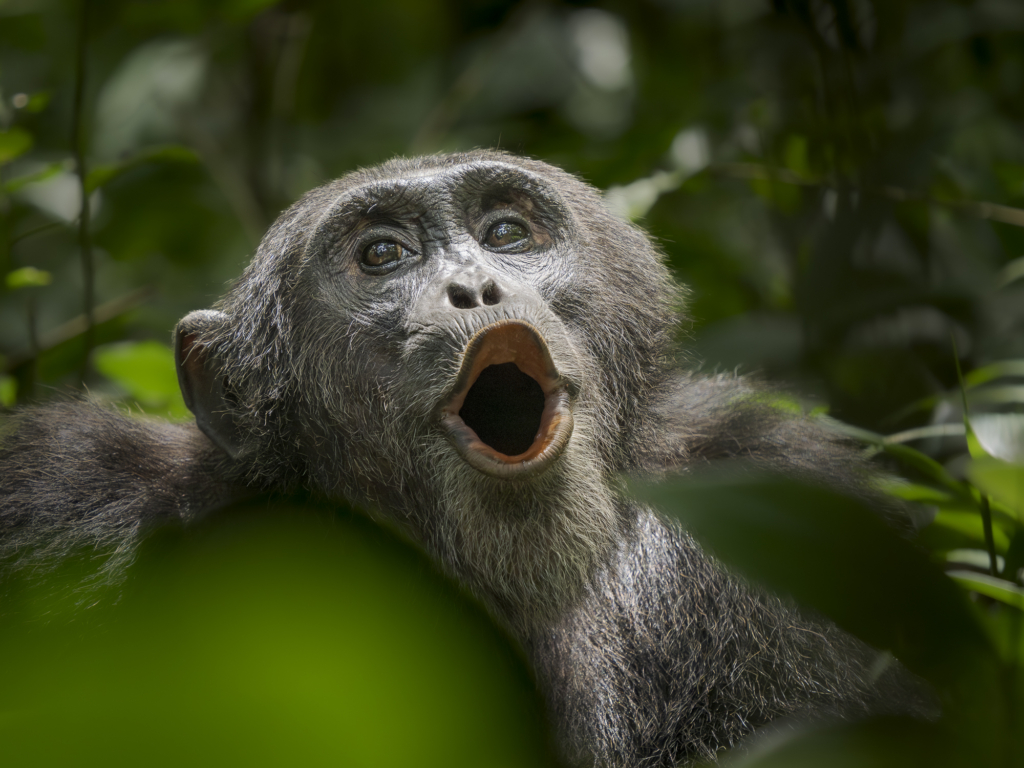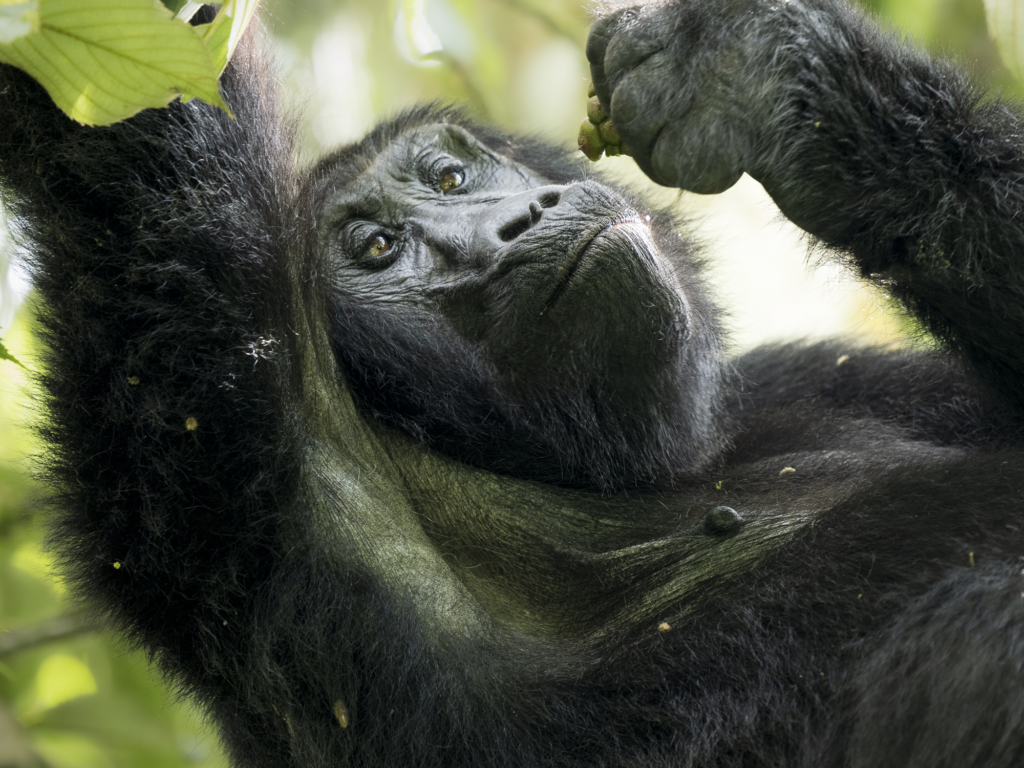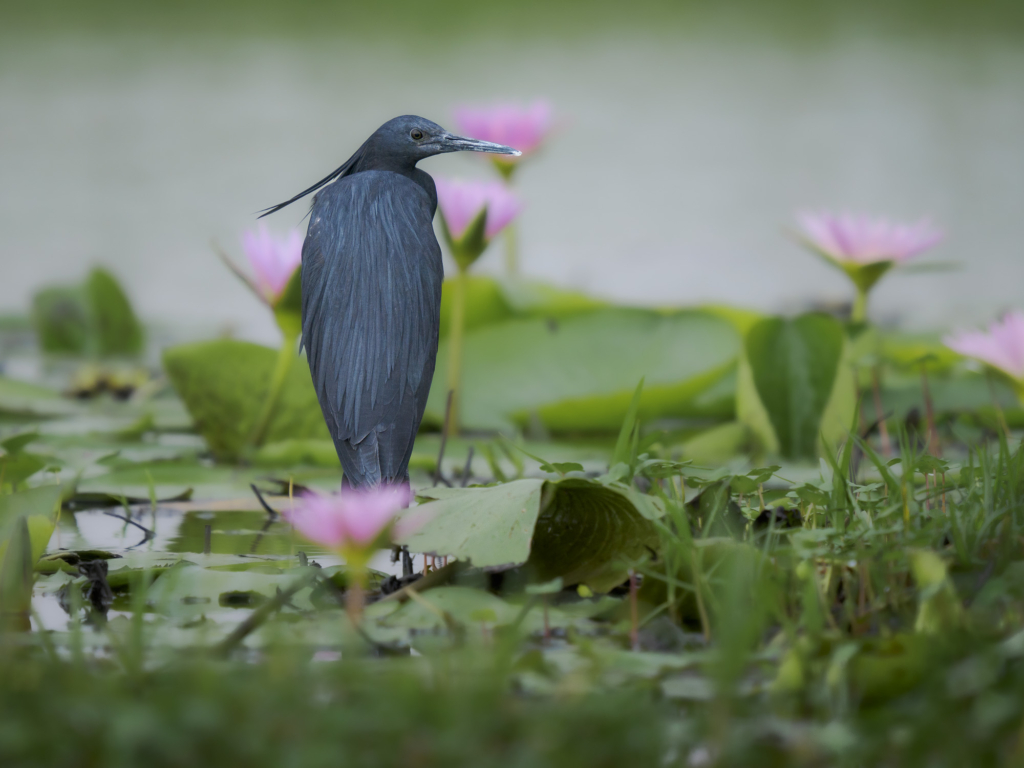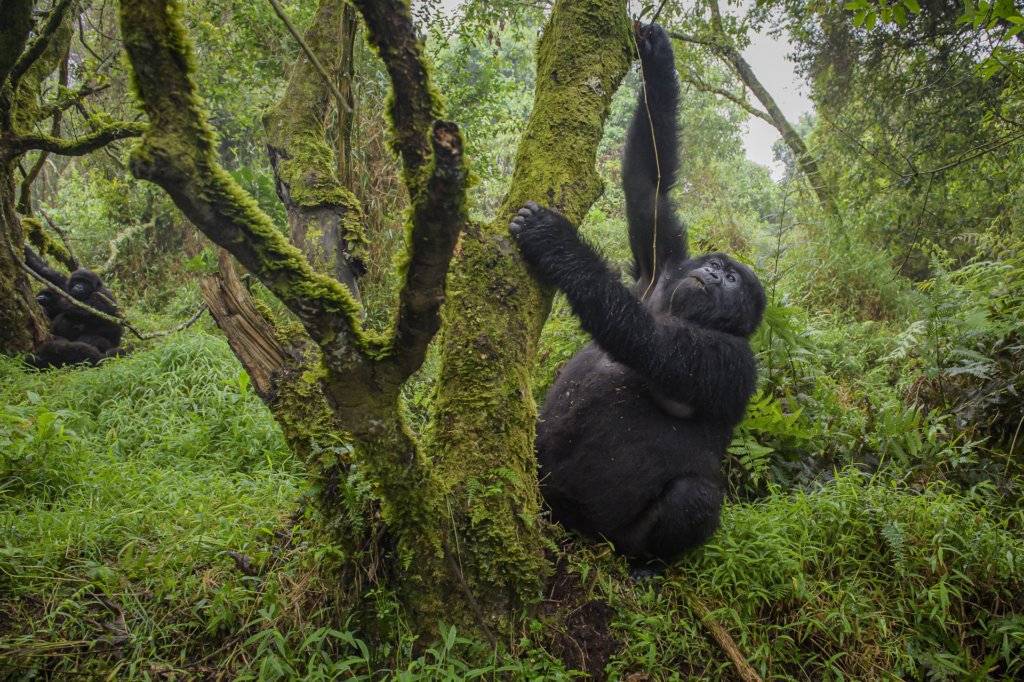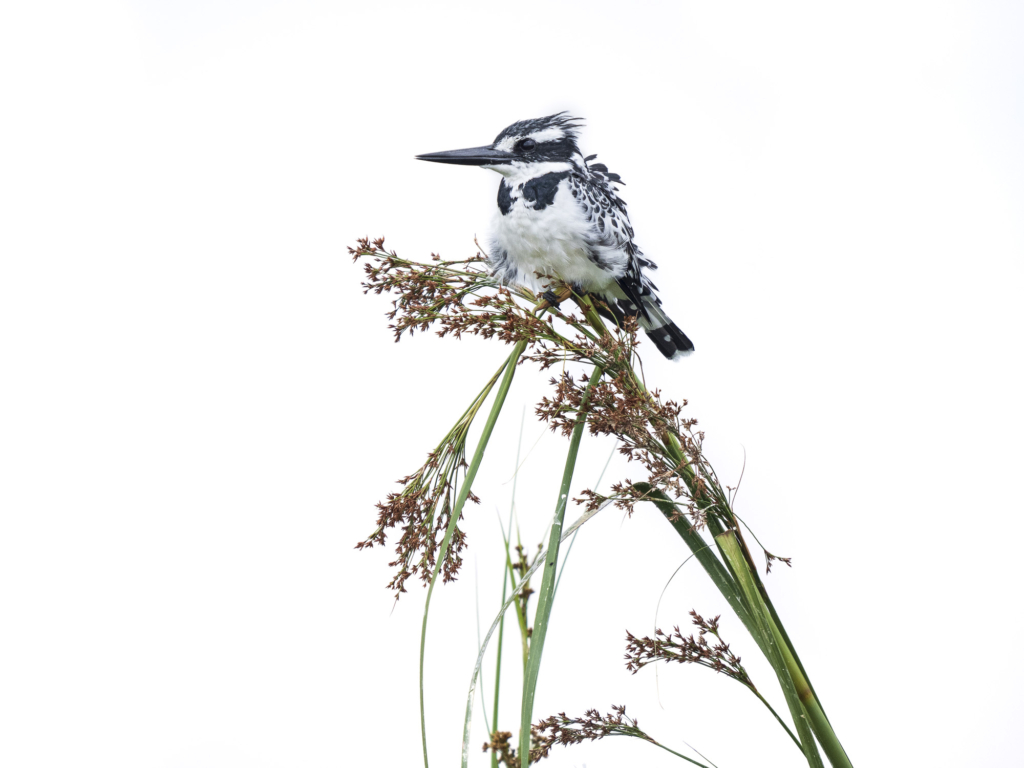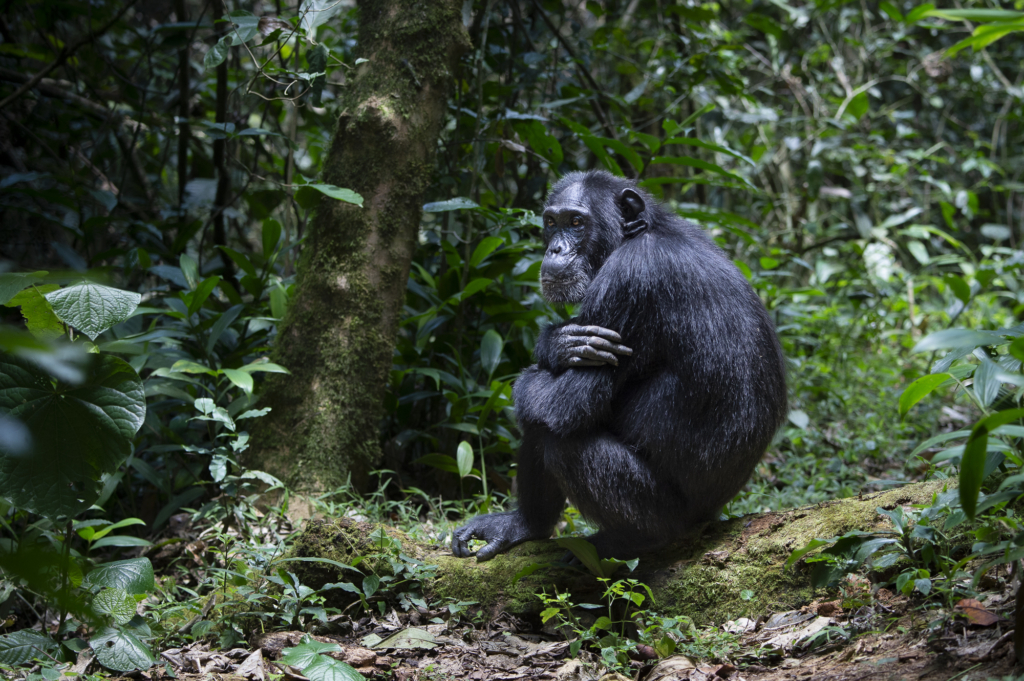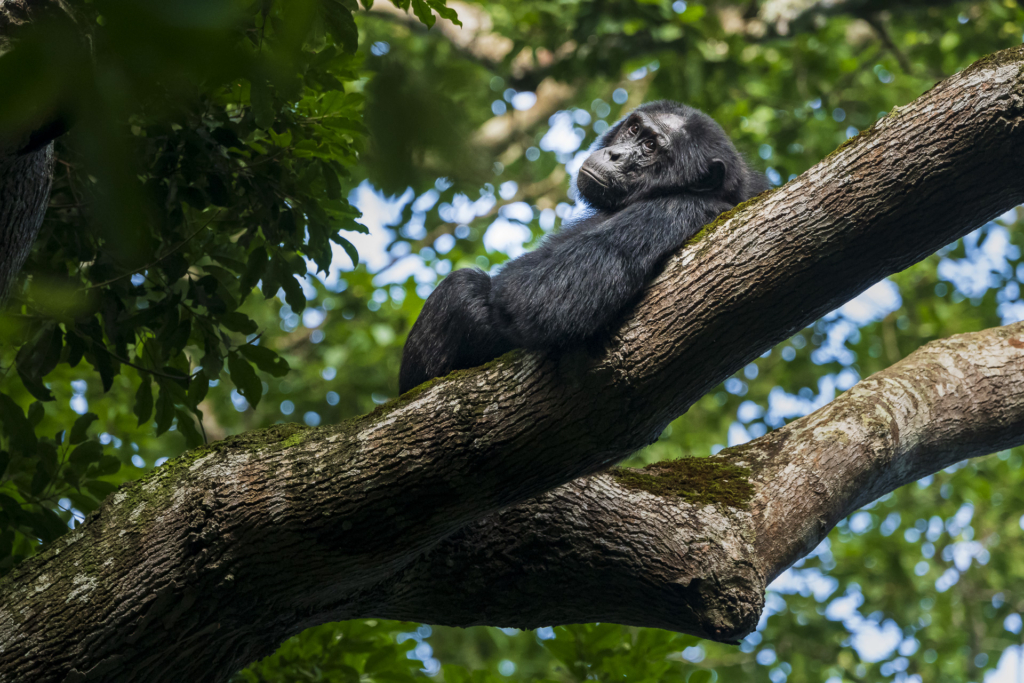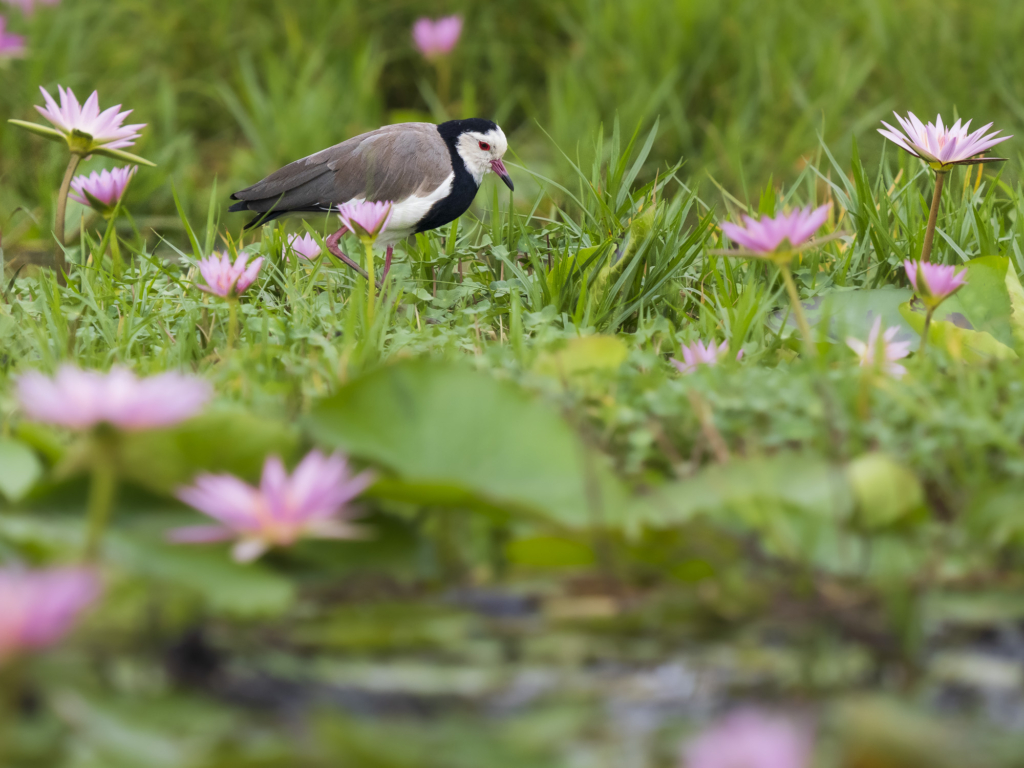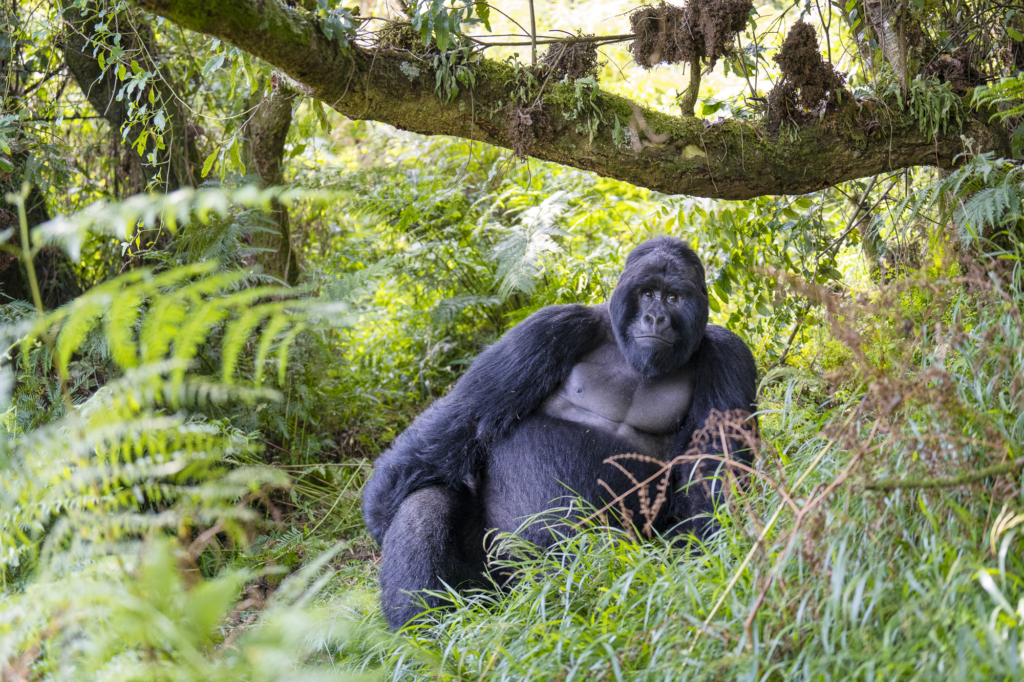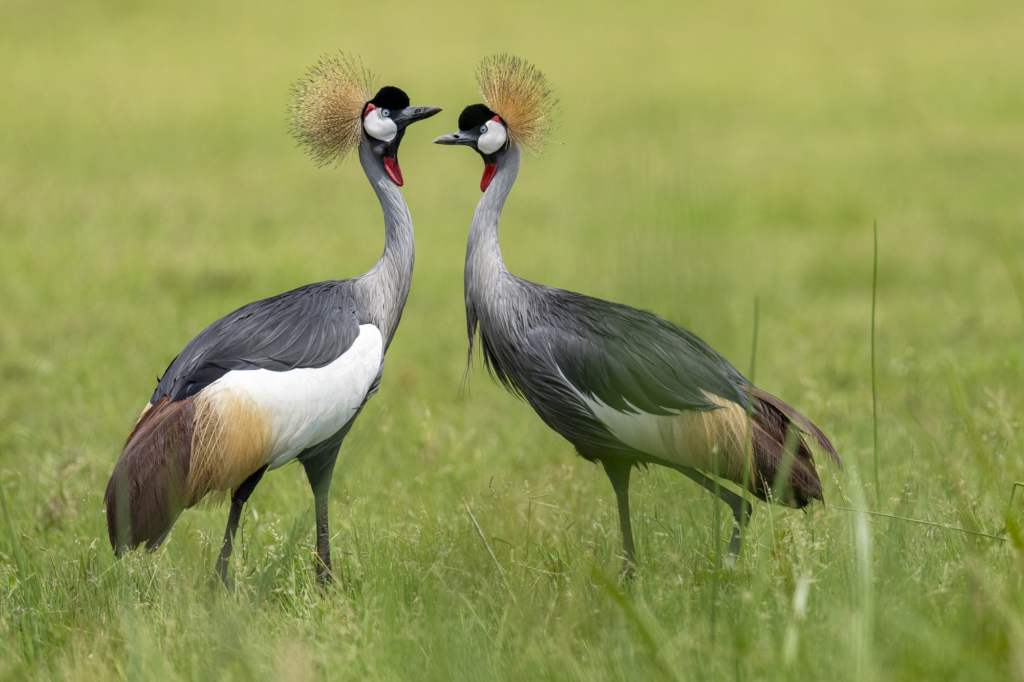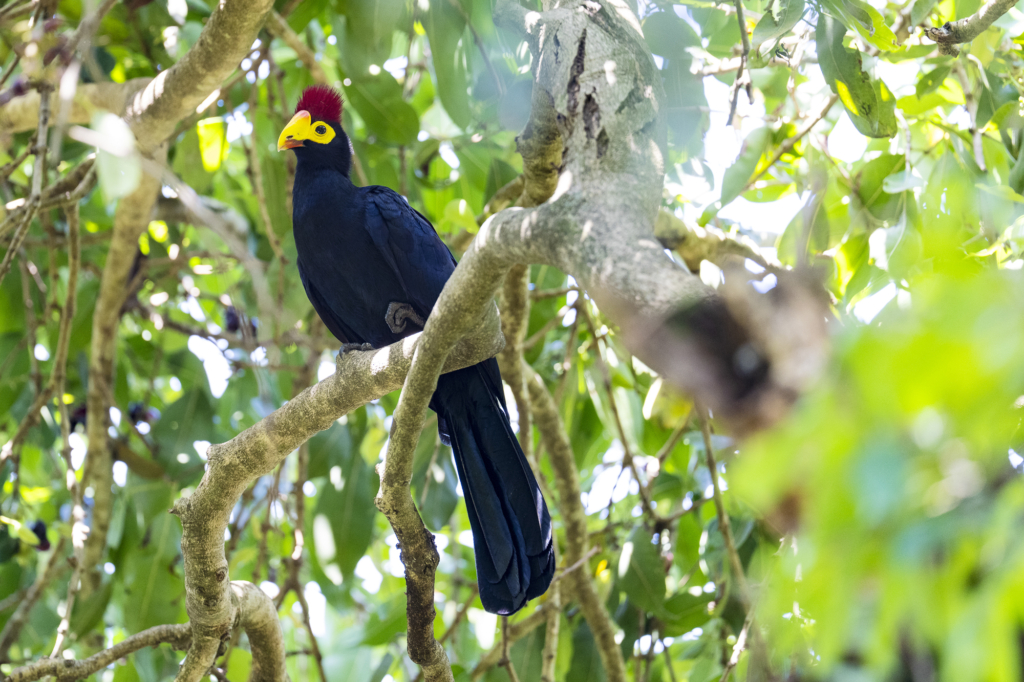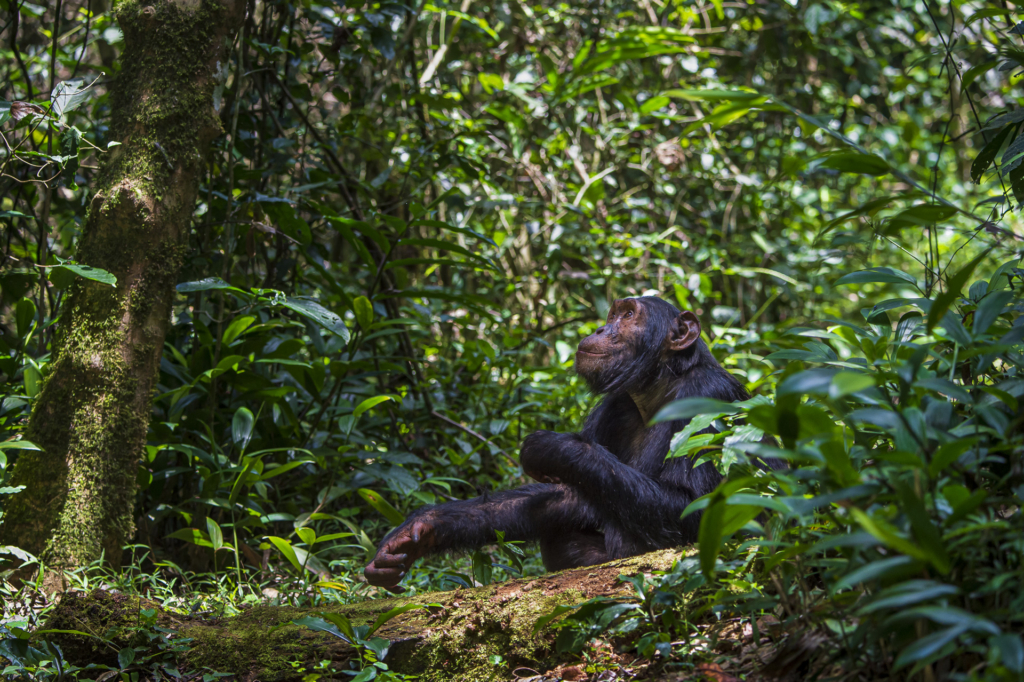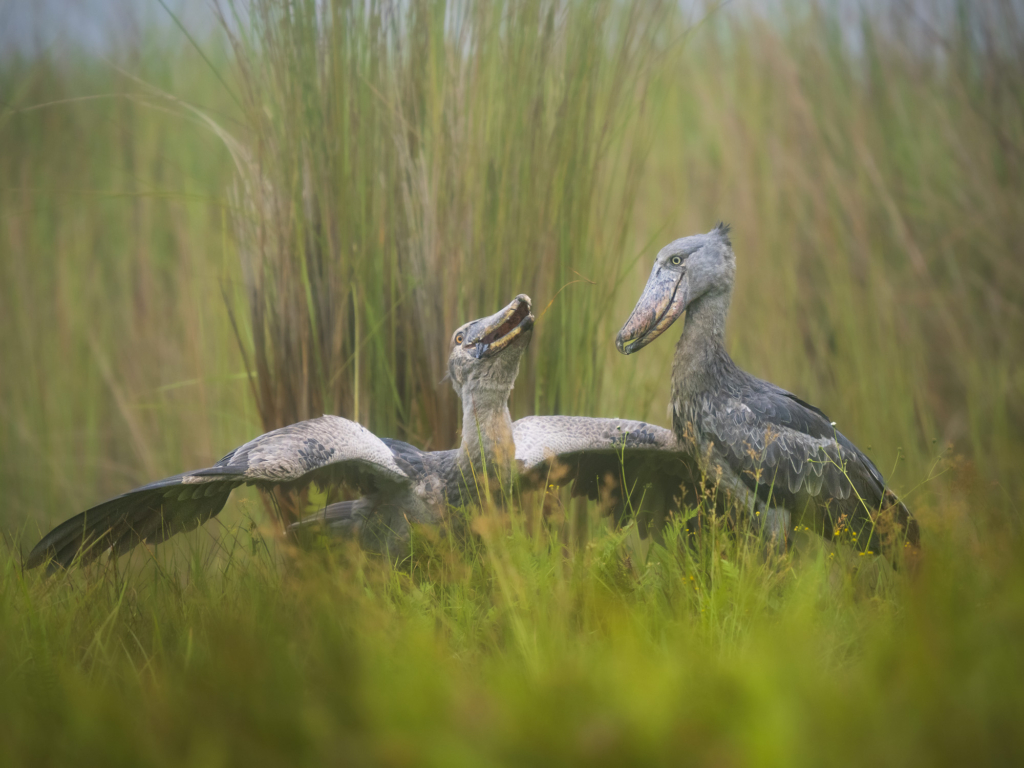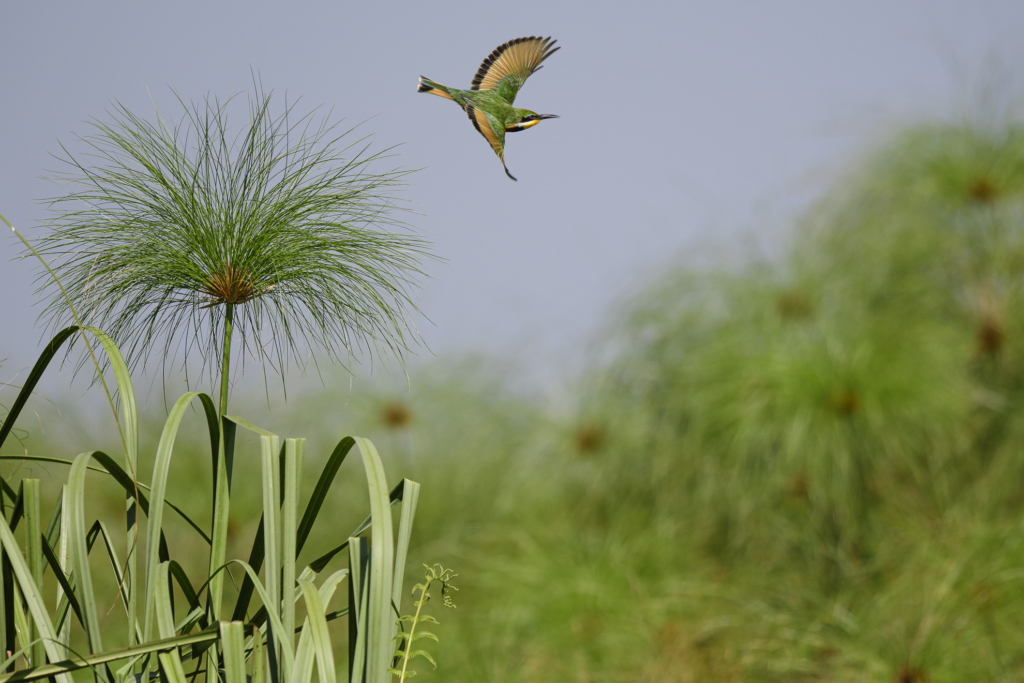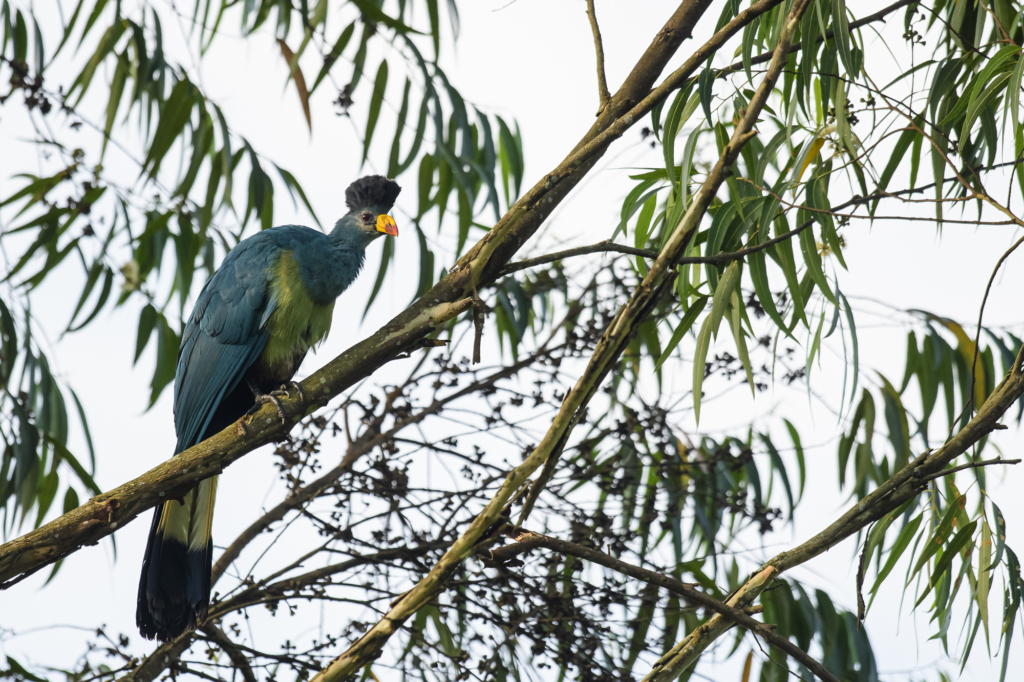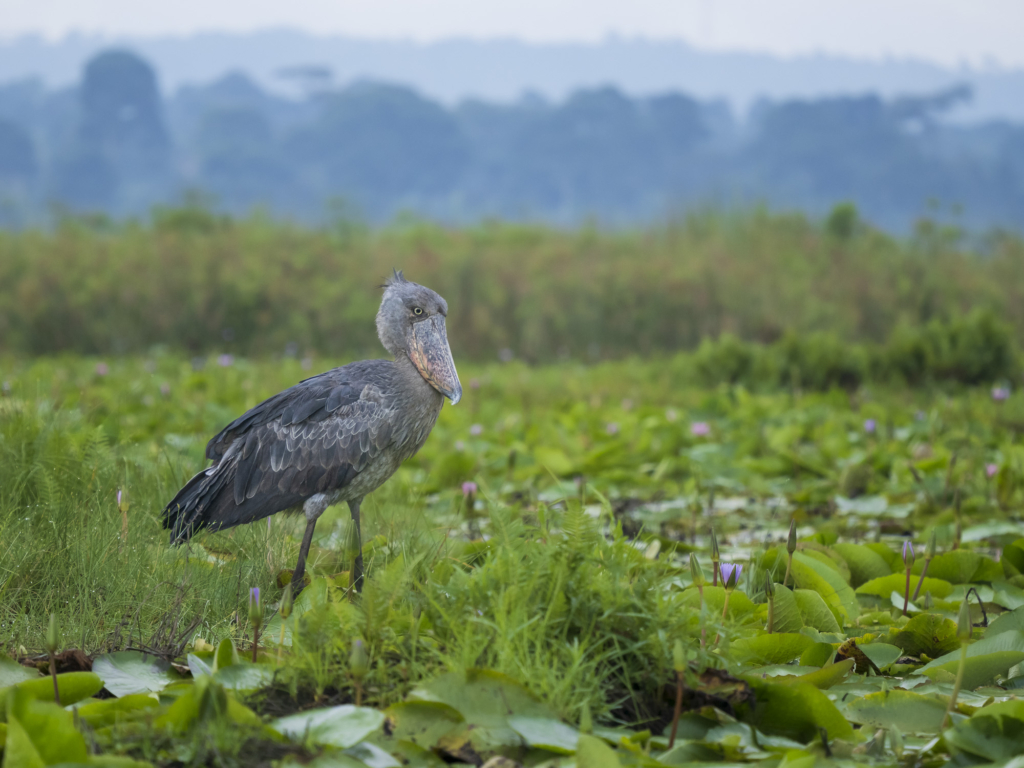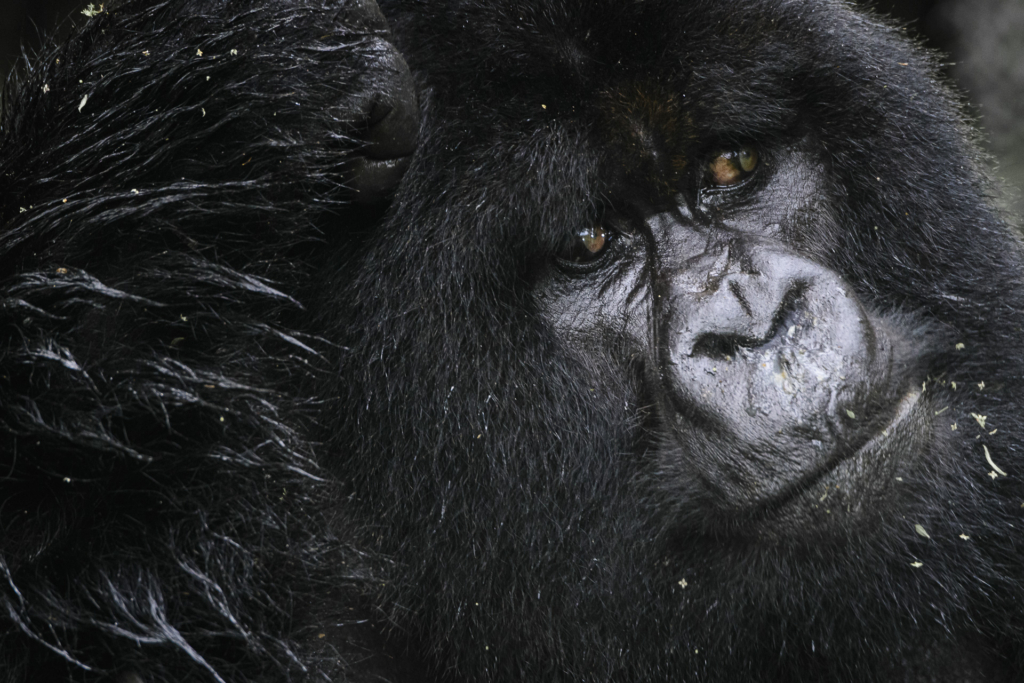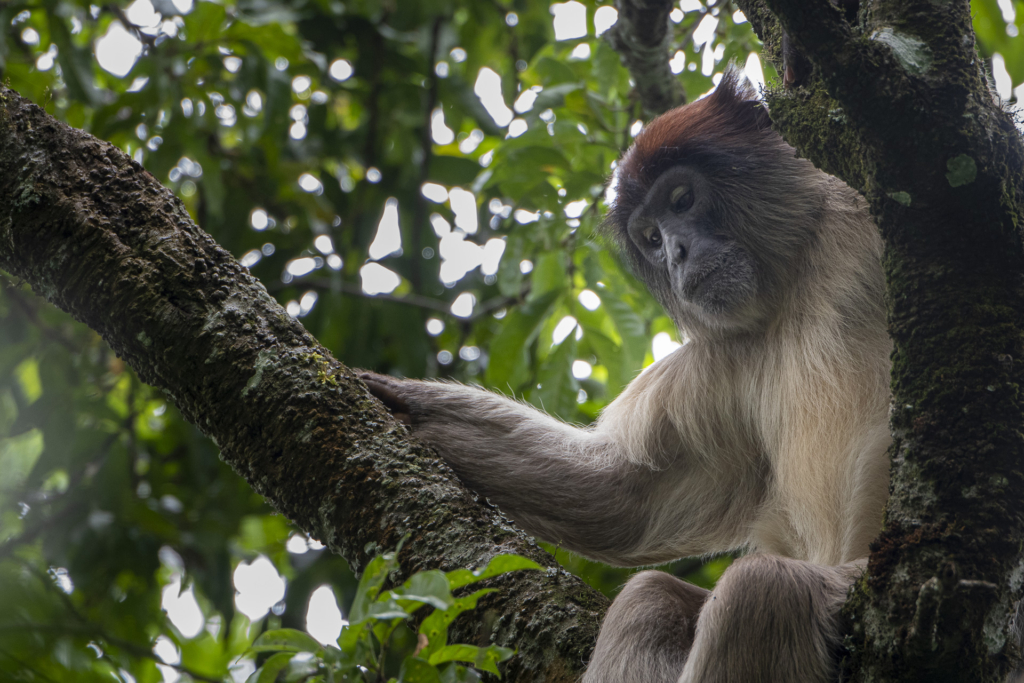Some highlights
- Visit to the Mountain gorillas
- To increase your photo opportunities you can book a second visit to the Mountain gorillas
- Visit to the Chimpanzees in Kibale National Park
- To increase your photo opportunities you can book a second visit to the Chimpanzees
- Visit to the highly endangered Golden monkey in Mgahinga National Park
- Visit to Bigodi swamp where we look for the monkeys Black and white colobus, Red colobus, Red-tailed monkey and Grey-cheeked mangabey
- Two days in the Mabamba wetland reserve to look for the shoebills
- Fantastic bird life with lots of exotic species – kingfishers, bee-eaters, egrets and the crown jewel the Great blue turaco
- All local transports are in comfortable Toyota Landcrusiers
- The tour leader will show you their best spots and provide photographic advice to a small group that share the same interests
MOUNTAIN GORILLAS
During the British colonial era, Uganda was nicknamed the Jewel of East Africa and it is a name that still is valid for Uganda. The country is a real natural jewel with a huge diversity of mammals, birds, reptiles and insects. At the top of the list is probably the mountain gorilla, one of the world’s most endangered mammal species. Today, it is estimated that there are just under 1,000 mountain gorillas left in the wild and all live in the Virunga Mountains, located in Uganda, Rwanda and Congo-Kinshasa, and in the nearby Bwindi Impenetrable forest. To experience the mountain gorillas in the wild is something that you never will forget, perhaps it is one of the greatest nature experiences you can get. We have one trek to the Gorillas included in the price but if you want to increase the experience and photograph you can pre-book a second “gorilla trek”. Visits to the gorillas are strictly regulated and the time you can spend with the gorillas is limited. We will visit the mountain gorillas in Mgahinga National Park or in the Bwindi Impenetrable forest.
CHIMPANZEE
The chimpanzee is one of Uganda’s other really brilliant jewels in nature. Together with the bonobon, the chimpanzee is the ape that is most closely related to humans, it shares about 99% of its DNA with modern humans. During our day with the chimpanzees, we start early in the morning to have time to find the chimpanzees before they wake up for the day. Then we follow them in their lives during the day, we pretend that we eat what they eat, we do what they do, etc. all to get as close to them as possible and experience the chimpanzees’ everyday life. A day with the chimpanzees means that once we have found them, we can spend about 2-4 hours with them. Also here you can pre-book a second visit to the Chimpanzees to get more photo opportunities.
GOLDEN MONKEY
During our days in Mgahinga National Park, we will also spend a day looking for the highly endangered Golden monkey that only lives in the Virunga Mountains in the border area between Rwanda, Uganda and Congo-Kinshasa. During our days among gorillas, chimpanzees and Golden monkeys, we will of course find many other exciting animals and birds that we are given the opportunity to photograph.
BIGODI WETLAND
Bigodi wetland is a fascinating area. The reserve is known for its rich biodiversity, where there are several species of primates, including Eastern black-and-white colobus (Colobus guereza), Grey-cheeked mangabey (Lophocebus albigena) and Red-tailed monkey (Cercopithecus ascanius). In addition to these species, which we have great chances to photograph, there are also Red colobus (Piliocolobus tephrosceles) and Mountain monkey or L’Hoest’s monkey (Allochrocebus lhoesti) i Bigodi. The latter, however, is very rare to see.
Bigodi is also very rich in birds and we will try to get good photo opportunities on the Great blue turaco which is the real jewel in the bird fauna in the area.
SHOEBILL
Our tour takes us to the Mabamba wetland area to photograph the mythical bird the shoebill. Here we will spend two days and make a total of three excursions in the wetland area in small boats. The boats give us the opportunity to slowly and quiet make our way towards the birds in the wetland.
The shoebill lives in large wetland areas and today it is estimated that there are between 5,000 and 8,000 individuals left in the world, where the majority are found in Sudan. Outside of Sudan, the Mabamba wetlands are considered the best place in the world to see the bird. With a body length of 150 centimeters, the shoebill is one of the world’s largest birds. The beak is large and wide with a light pink to orange-like base tone with dark spots and gives the bird an unmistakable appearance.
In addition to the shoebill, we will be able to photograph several species of kingfishers, bee-eaters, herons, ducks and other exciting birds.
PHOTOGRAPHIC LEARNING
During the tour, our photographic leaders will constantly give you photographic advise based on your prior knowledge and level. The guidance in the field is completely adapted to you and your needs. In addition to this, we will also have theoretical sessions where we talk about different photo techniques that we will use during the tour. During our tour in Uganda, will we often be in forest and photograph, so we will e.g. to focus on how you can use foregrounds and backgrounds to create more exciting images.
In addition, we will include different techniques on how to create movement in your images through eg. to use panning as a method. As mentioned, continuing education is adapted to the group’s and the individual’s knowledge, but we will also see what photographic opportunities may arise during the tour.
Itinerary
Day 1 (5/5) (Dinner)
Arrival at Entebbe airport early in the morning and drive to Kibale National Park and our lodge. Lunch on the way to the lodge. After check-in and some rest, we have a briefing about the tour and the day ends with dinner.
Day 2 (6/5) (Breakfast – Lunch – Dinner)
Today, our primate experience begins. We will spend most of the day in the jungle with the chimpanzees. We start early to find the chimpanzees before they leave their night nests. We will follow the chimpanzees for about 2-4 hours and to get really close to them we participate in their everyday life. We will return to our lodge during the afternoon / evening.
Day 3 (7/5) (Breakfast – Lunch – Dinner)
After breakfast will we head to the Bigodi wetland reserve to look for Eastern black and white colubus (Colobus guereza), Grey-cheeked mangabey (Lophocebus albigena) and Red-tailed monkey (Cercopithecus ascanius). If we have some luck, we will get to see and be able to photograph also Red colobus (Piliocolobus tephrosceles) and Mountain monkeyor L’Hoest’s monkey (Allochrocebus lhoesti) as it also called.
We will also keep an eye out for birds when we hike in the area, here we have good opportunities to find the Great blue turacos. We will spend the morning in the reserve.
If you want, you can make a second visit to the chimpanzees in the afternoon, see more information below.
Day 4 (8/5) (Breakfast – Lunch – Dinner)
Today is a transport day to Mgahinga National Park. We leave after breakfast and travel along the slope of Rwenzori and through the rolling hills at Kigezi. We have lunch along the way and surely we will find some nice photo stops along the way. We arrive at our lodge in the evening.
Day 5 (9/5) (Breakfast – Lunch – Dinner)
Today we will start our hikes in the jungle in the Virunga Mountains and look for primates.Today is the day with a capital G, our gorilla hike is on the agenda. We will have an early breakfast, and bring packed lunches, then we go to Mgahinga National Park. After the usual paperwork, our search for the mountain gorillas begins. It is difficult to say exactly what the day will look like as it depends on where the gorillas are, but when we find them, we will spend an hour with them.
Day 6 (10/5) (Breakfast – Lunch – Dinner)
We will have an early breakfast and bring packed lunches. After we have registered in the national park’s office, we head out into the jungle to look for the Golden monkeys. The search for the monkeys can take from one hour to up to four hours depending on where they are located, but expect that we are out pretty much all day. Mgahinga National Park is part of the Virunga Massif, which stretches across the three countries of Uganda, Rwanda and Congo-Kinshasa.
Today you can also choose to do a second gorilla trek instead of going to the golden monkeys, see more information below.
Day 7 (11/5) (Breakfast – Lunch – Dinner)
Today will we travel to Mabamba swamp. We will have a little sleep in this morning before heading east towards Mabamba. We will reach our lodge during the afternoon.
Day 8 (12/5) (Breakfast – Lunch – Dinner)
After breakfast will we head to the Mabamba wetland reserve and begin our search for the Shoebill. We make our way in the wetland by boat. In addition to shoebills, we hope to be able to photograph kingfishers, bee-eaters, jacanas and several heron species.
We have lunch and rest a bit at the lodge before we go out into the wetland again in the afternoon.
Day 9 (13/5) (Breakfast – Lunch – Dinner)
We will do one last boat excursion in Mabamba wetlands this morning. After lunch will we head towards Entebbe and the airport. Flights home in the evening.



